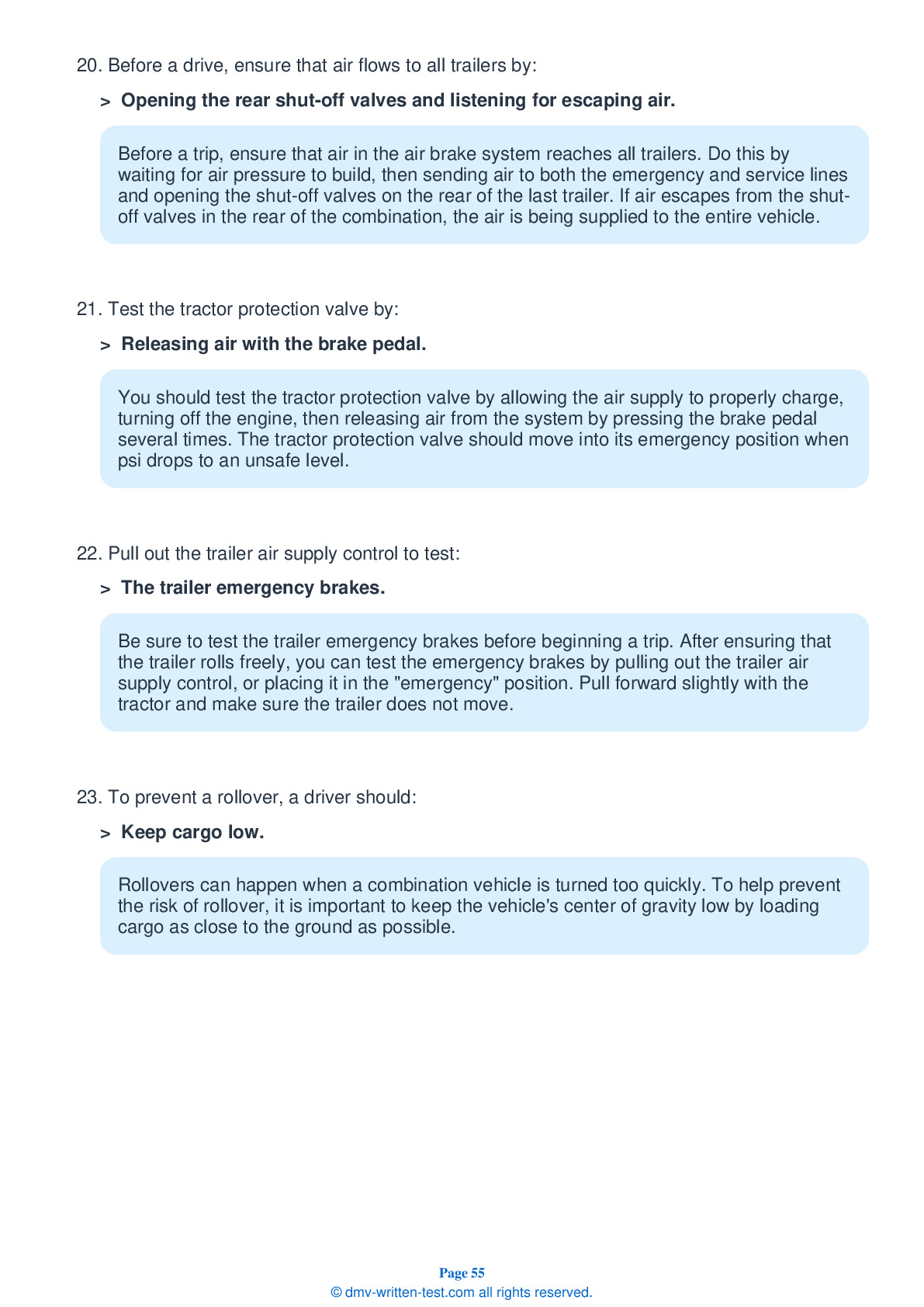Combination
All applicants who are applying for a Class A CDL should be prepared to take the Combination test. This test covers information found in Section 6 of the Minnesota Commercial Driver's Manual. Section 6 provides the information needed to safely operate tractor-trailers, doubles, triples, and straight trucks with trailers. The test is made up of 20 multiple-choice questions, and applicants will need to correctly answer a minimum of 16 questions to pass. The Combination test is not a replacement for the Double/Triple endorsement test.
Number of Question
Passing Score
1. Before a drive, ensure that air flows to all trailers by:
Explanation
Before a trip, ensure that air in the air brake system reaches all trailers. Do this by waiting for air pressure to build, then sending air to both the emergency and service lines and opening the shut-off valves on the rear of the last trailer. If air escapes from the shut-off valves in the rear of the combination, the air is being supplied to the entire vehicle.
2. If a load is placed on one side of a trailer, the trailer:
Explanation
Positioning the weight of a load on one side of a trailer may cause the trailer to lean to that side, increasing the risk of a rollover during turns and lane changes.
3. When coupling:
Explanation
Incorrect coupling and uncoupling of combination vehicles can have extremely dangerous consequences.
4. If a trailer begins to skid, the driver should:
Explanation
If your trailer starts to skid while you are braking, you should release the brakes and allow them to begin to regain traction. Once its wheels have regained their grip on the road, the trailer will begin to straighten out and follow the tractor.
5. Failure to keep the fifth wheel plate properly greased could:
Explanation
Failure to keep the fifth wheel plate properly lubricated can create friction between the tractor and trailer, causing steering problems.
6. If a parked trailer does not have spring brakes, you should keep the trailer from moving by:
Explanation
If a parked trailer does not have spring brakes, wheel chocks should be used to prevent it from moving.
7. If unsure if a trailer is equipped with ABS, you can:
Explanation




